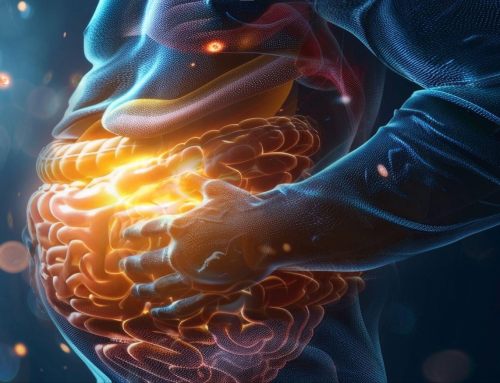Challenges for Root Cause Analysis in Acute and Chronic Illnesses
It’s an understatement to say that detecting the underlying root cause of human illness is very challenging. There may be a 7-headed hydra of recognizable signs and symptoms, all stemming from a single source, the “root cause.”
However, being able to trace those seven manifestations to one root cause is extremely difficult. (Not to say there is always one source of illness, as there is much scientific literature showing that illnesses can and do have multiple root causes.) For example, inflammation is considered one root cause of both cardiovascular disease and type 2 diabetes. Inflammation is a source of illness resulting in two different manifestations of symptoms. Yet inflammation can be both the result of something happening and the source driving symptoms elsewhere. It begs the question of what the normal state is or should be.
Unfortunately, it is challenging enough to determine what normality is, let alone be able to distinguish the state of disease or illness and its root causes. What are some of the challenges that make the identification of illness and root cause analysis so difficult?
Stating the Obvious: We Are Biochemically Unique
Human beings are incredibly complex. It’s estimated that we have close to 100 trillion cells of 210 cell types, have about “35,000 genes, 10 million proteins (including antibodies), and 2000-3000 metabolites. In addition, each human cell is made up of 95 trillion water molecules, 60 billion proteins, 2 trillion fat molecules, 5 trillion sugars and amino acids, 60 billion RNA molecules, and six feet of DNA. A ‘simple’ organ such as the brain comprises 100 billion neurons, each one possessing approximately 10,000 connections, which creates a synaptic network of 1 quadrillion components” (1). Around 70% of those 100 trillion cells belong to microorganisms living in the gut, the microbiota.
The microbiota is developed in tandem with the Central Nervous System (CNS) and the Enteric Nervous System (ENS), influenced by immune factors from the mother’s milk and environmental factors during early growth. This guarantees that no two humans are 100% alike, not even identical twins.
With complexity such as this, establishing “normal” versus “disease state” presents some obstacles. Without knowing if a disease state exists in the first place, it’s hard to arrive at a root cause for the symptoms of illness. What have we done to deal with diagnosing a disease state? We go with the numbers. That’s largely why, in Western medicine, learning how to diagnose disease or illness is largely a matter of learning what causes “most” people to exhibit a particular symptom or group of symptoms. For some illnesses, tools and tests can be used to verify the situation. Unfortunately, that leaves the rare illnesses undiagnosed for long periods of time. Even if symptoms are diagnosed, it may leave untouched the question of a common source, the underlying root cause that drives all the symptoms.
Hardware / Software Analogy: “Hardwired” with the Ability for Real-Time Modifications
Human biology shows a trend of having a difficult-to-change anatomical structural layer that is inherited, combined with the ability to modify that layer (or that layer’s effects) so that the body may respond to real-time stimuli and influences. When referring to the complexity of the body, many like to make an analogy to computing hardware and software. The “hardware” is the physical structures of the body, while the “software” is anything that modifies the underlying structures or its output in some way. What follows are examples of human bodies being able to modify themselves, representing complexity that makes it extremely difficult to track symptoms of illness from their manifestations to a root cause.
1. DNA and epigenetics
DNA has been thought of as the “blueprint of life,” a map that could tell us so much information about ourselves. Advances in technology have allowed for the mapping of the human genome, the whole set of instructions writ in our DNA that reveals our biological makeup. Many like to make the analogy that DNA is similar to computing hardware, and the software are mechanisms such as DNA methylation that can modulate the end result by switching genes on and off (epigenetics). Lurking there in the DNA can be code that results in illness and symptoms which are never switched on until diet, lifestyle, or toxins in the environment help toggle the switch to “on.” Or conversely, the DNA code can be just fine, but the software modifications go awry.
Several diseases have been identified as having an epigenetic mechanism as a root cause, resulting in unusual expression of the underlying genes, but also showing some amount of regulation during the course of the disease. For example, type 2 diabetes, asthma, and other inflammation-based conditions meet these criteria (2). These epigenetic changes are mediators for unresolved inflammation because of the ability to prolong the expression of cytokine TNF-a, which is pro-inflammatory (3).
Though there is churn over correlation vs. causation in regards to epigenetics and inflammation in chronic illnesses, one bright spot is that epigenetic changes detected throughout the lifespan of a disease can provide identifiable, trackable biomarkers (4). No doubt studies coming out of this approach will help clarify the identification of root cause, if not other uses. Indeed, DNA methylation patterns are also being used to gauge biological age.
2. The software attributes of microbiota
The Enteric Nervous System (ENS), a large mesh of neurons embedded in the gastrointestinal (GI) tract, is the hardware directly affected by the various microorganisms (microbiota) within the GI tract acting as software. The ENS regulates physiological functions such as peristalsis of the GI tract, secretions, hormone release, and blood flow. Afferent fibers of the ENS send data about its operations to the brain, while efferently, the brain can control such things as voluntary bowel movements.
Incredibly, the makeup of microbiota changes within 3-4 days of a change in the diet (5), with these changes also affecting structures of the ENS through a variety of mechanisms, through metabolites produced by the microbiota (6), or through hormone production (7). In response to microbiota actions, enteroendocrine cells (EECs) of the ENS release cytokines and hormones. However, the microbiota can not only affect the ENS but the metabolites and byproducts of food decomposition can also have far-reaching effects all the way to the brain.
The microbiota muddies the waters of root cause identification in numerous ways. The sheer numbers of microorganisms, their genomes, and their byproducts represent huge numbers. Luckily, very high computing power enables omics and bioinformatics to handle increasing amounts and types of information. Efforts continue to establish causality emanating from the microbiome (8). The repeated observations of correlation must have stringent criteria met for researchers to have confidence in causality.
In 2021, Chaudhari et. al forwarded a series of five criteria that must be met to suggest the causality of molecules in microbiome-linked diseases (8), oddly enough, very much in the style of a “sales funnel” qualification. (Note, this funnel criteria involves fecal microbiota transplants, so it may not apply to some lines of inquiry.)
3. The software attributes of microglia
Microglia, supporting structures to neurons in the brain, also display some software attributes in the sense that they are quick responders to stimuli and act upon neuronal hardware. Originally thought to only function as cushioning and house-cleaning (phagocytosis) for neurons, it turns out that microglia can affect the number and efficiency of neuronal synapses as well as respond with pro-inflammatory chemicals when neurons undergo trauma or pathological conditions.
Whereas epigenetic mechanisms may leave the underlying DNA alone, microglia do directly take out some underlying neuronal hardware in the form of synaptic pruning (9). When they do leave the neuron intact, they can modify the strength or efficiency of the neuronal synapse, creating a functional layer over the neuron.
Once triggered by the microenvironment, the microglia can create inflammation for long periods of time, contributing to chronic inflammation and subsequent neuronal damage that has been correlated with a variety of acute and chronic illnesses such as Parkinson’s disease, HIV-dementia, prion diseases, and Alzheimer’s (10).
Microglia has the benefit of having multiple adequate analytical tools, including multiple types of staining, electron microscopy, single-cell and bulk RNA sequencing, varieties of transcriptomics, and proteomics (11). Studies show that the microglial phenotype can be used to determine the pathology of a given CNS tissue sample which, if it cannot be pinned down as a root cause, can at least include or exclude CNS processes as being pathological or not (11).
4. The software of multiple feedback loops
Feedback loops are characterized by the output of the system ultimately being used as the input, to either amplify or inhibit the system. In the case of human biology, the feedback loop is a common construct of homeostasis, for adjustment towards some ideal set point or steady state. Feedback loops between organs, each making fine adjustments, can change the functioning of the next organ in line without changing the organs themselves. Continuing our analogy, the organs in the feedback loop are the hardware, and the fine adjustments elicited are the software code.
Two very prominent feedback loops in human biology are the Gut-Brain-Microbiome (GBM) Axis and the Hypothalamic-Pituitary-Adrenal (HPA) Axis. Though each feedback loop is complicated in its own right, the microbiome’s millions of microorganisms add layers of complexity. However, additional increases in complexity come from the sheer number of feedback loops in the human body operating simultaneously on multiple scales… and it’s extremely likely we have not discovered all of them.
Being able to track changes in real-time is key to helping identify root causes and sort correlation from causation, which is important to root cause analysis. With the GBM Axis, genomics, metabolomics, proteomics, and transcriptomics are helping quantify and describe states of health. The HPA Axis inquiry involves measuring metabolites and hormones. Network modeling and systems approaches can try to get their arms around the concept of quantifying and describing feedback loops (12, 13), but analyzing the totality has not been achieved. This brings us to our next subject.
The Lack of Meaningful Systems-Level Analysis
Though many types of systems science (systems biology, systems medicine, network biology, etc.) have made great strides, there are still no meaningful systems-level analyses that determine the root cause of human illnesses. Instead of looking merely at symptoms, a systems-level approach to identifying a root cause for human illnesses would make use of information from the many systems that operate in the body simultaneously. What would the scope of this systems-level analysis take into consideration – because there are many, many levels of possible scope?
It would be fantastic if all known levels of scope could be taken into consideration at once, the level of organ systems, feedback loops (GBM, HPA, or even host-pathogen), various networks and network proximities, signaling pathways, etc., ad infinitum. Big datasets and the explosion of multi-omics disciplines are helping us get closer to this goal (14). In fact, there’s a robust set of data analysis tools and databases that can correlate various network-represented data with functional data from big omics datasets (15).
However, the data that can be represented with networks (for example, metabolic pathways, gene regulatory networks, Protein-Protein-Interaction (PPI) networks, signaling networks, and drug targets) don’t have a tool that synthesizes or evaluates all those types of network data at the next meta-level. Sadly, the Star Trek tricorder level of diagnostic sophistication has not arrived. Even if there was a way to handle the calculations of all the possible permutations presented by human complexity and create algorithms to correlate or sort through different types of data flowing from the omics, we’d likely still have the problem of separating causality from correlation (16).
Living in the Gap There is a gap between the “questions we have” versus the “the questions we can answer,” and it’s necessary from time to time to review this gap. Quantifying the healthy state is difficult amidst the vast permutations of states that are possible in such a complex organism. Even more challenging is drawing the “X” on the moving part or parts that could be a root cause of a disease state. While we are becoming more capable of integrating big data sets to glean meaningful information, the industry is ripe for a disruptor to cut through the noise to identify root causes without having to completely simulate or model every biological dynamic first.
Sources:
- Naylor S, Chen JY. Unraveling human complexity and disease with systems biology and personalized medicine. Per Med. 2010 May;7(3):275-289. doi: 10.2217/pme.10.16. PMID: 20577569; PMCID: PMC2888109.
- Samanta S, Rajasingh S, Cao T, Dawn B, Rajasingh J. Epigenetic dysfunctional diseases and therapy for infection and inflammation. Biochim Biophys Acta Mol Basis Dis. 2017 Feb;1863(2):518-528. doi: 10.1016/j.bbadis.2016.11.030. Epub 2016 Dec 3. PMID: 27919711; PMCID: PMC5222695.
- Shanmugam MK, Sethi G. Role of epigenetics in inflammation-associated diseases. Subcell Biochem. 2013;61:627-57. doi: 10.1007/978-94-007-4525-4_27. PMID: 23150270.
- Buchheit T, Van de Ven T, Shaw A. Epigenetics and the transition from acute to chronic pain. Pain Med. 2012 Nov;13(11):1474-90. doi: 10.1111/j.1526-4637.2012.01488.x. Epub 2012 Sep 14. PMID: 22978429; PMCID: PMC3501579.
- David, L. A., Maurice, C. F., Carmody, R. N., Gootenberg, D. B., Button, J. E., Wolfe, B. E., Ling, A. V., Devlin, A. S., Varma, Y., Fischbach, M. A., Biddinger, S. B., Dutton, R. J., & Turnbaugh, P. J. (2013, December 11). Diet rapidly and reproducibly alters the human gut microbiome. Nature News. Retrieved September 7, 2022, from https://www.nature.com/articles/nature12820
- Yu Y, Yang W, Li Y, Cong Y. Enteroendocrine Cells: Sensing Gut Microbiota and Regulating Inflammatory Bowel Diseases. Inflamm Bowel Dis. 2020 Jan 1;26(1):11-20. doi: 10.1093/ibd/izz217. PMID: 31560044; PMCID: PMC7539793.
- Clarke, G., Stilling, R. M., Kennedy, P. J., Stanton, C., Cryan, J. F., & Dinan, T. G. (2014, August 1). Minireview: Gut microbiota: The neglected endocrine organ. OUP Academic. Retrieved September 7, 2022, from https://academic.oup.com/mend/article/28/8/1221/2623221?login=false
- Chaudhari SN, McCurry MD, Devlin AS. Chains of evidence from correlations to causal molecules in microbiome-linked diseases. Nat Chem Biol. 2021 Oct;17(10):1046-1056. doi: 10.1038/s41589-021-00861-z. Epub 2021 Sep 22. PMID: 34552222; PMCID: PMC8480537.
- Synaptic pruning by microglia is necessary for normal brain … – science. (n.d.). Retrieved September 7, 2022, from https://www.science.org/doi/10.1126/science.1202529
- Dheen ST, Kaur C, Ling EA. Microglial activation and its implications in the brain diseases. Curr Med Chem. 2007;14(11):1189-97. doi: 10.2174/092986707780597961. PMID: 17504139.
- Schwabenland, M., Brück, W., Priller, J., Stadelmann, C., Lassmann, H., & Prinz, M. (2021, October 8). Analyzing microglial phenotypes across neuropathologies: A practical guide – acta neuropathologica. SpringerLink. Retrieved September 7, 2022, from https://link.springer.com/article/10.1007/s00401-021-02370-8
- Kriete A, Sokhansanj BA, Coppock DL, West GB. Systems approaches to the networks of aging. Ageing Res Rev. 2006 Nov;5(4):434-48. doi: 10.1016/j.arr.2006.06.002. Epub 2006 Aug 14. PMID: 16904954.
- Watson E, Yilmaz LS, Walhout AJ. Understanding Metabolic Regulation at a Systems Level: Metabolite Sensing, Mathematical Predictions, and Model Organisms. Annu Rev Genet. 2015;49:553-75. doi: 10.1146/annurev-genet-112414-055257. PMID: 26631516.
- Hasin Y, Seldin M, Lusis A. Multi-omics approaches to disease. Genome Biol. 2017 May 5;18(1):83. doi: 10.1186/s13059-017-1215-1. PMID: 28476144; PMCID: PMC5418815.
- Dhillon, B. K., Smith, M., Baghela, A., Lee, A. H. Y., & Hancock, R. E. W. (1AD, January 1). Systems biology approaches to understanding the human immune system. Frontiers. Retrieved September 7, 2022, from https://www.frontiersin.org/articles/10.3389/fimmu.2020.01683/full
- Hasin, Y., Seldin, M., & Lusis, A. (2017, May 5). Multi-omics approaches to disease – genome biology. BioMed Central. Retrieved September 7, 2022, from https://genomebiology.biomedcentral.com/articles/10.1186/s13059-017-1215-1












